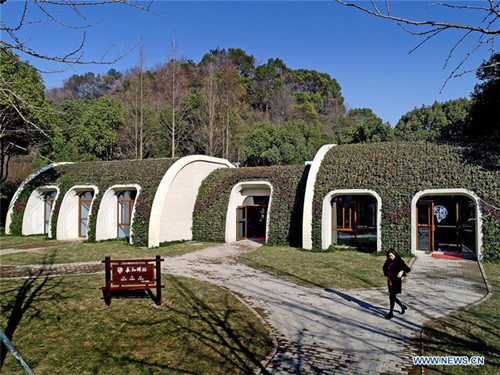Patriotic Health Campaign: Toilets no small matter in ‘healthy cities’
China’s traditional Patriotic Health Campaign underwent 40 years of progress before the title “hygiene city” was replaced with the current “healthy city”.
The Xiaoingxiang community is no doubt a “star model” of the health campaign. The community is located in the Shangcheng District of downtown Hangzhou, the capital city of East China’s Zhejiang province and a pioneer of China’s reform and opening-up policy.
The Xiaoyingxiang community has always been the vanguard of the national health campaign since it was lauded by Chairman Mao Zedong during his Patriotic Health Campaign inspection on Jan 5, 1958.
Xiaoyingxiang is also a laureate community because of its superb hygiene services. It was awarded as a “healthy community” by the WHO in 2013, and was named a National Health Unit four times. It has gained more than 200 honorary titles at the national, provincial and city levels.
In December 2003, Xi Jinping, who was Zhejiang provincial Party chief at that time, inspected the Xiaoyingxiang community for its community construction work and in July 2011 fully affirmed the gratifying changes in the community in a letter to the community’s Party committee.
In 2017, on the occasion of the 65th anniversary of the Patriotic Health Campaign, China’s first Patriotic Health Campaign Memorial was unveiled in the Xiaoyingxiang community.
Seven people have served as the community’s committee members in charge of hygiene. The current incumbent hygiene monitor is Xu Difeng, who was born in 1989.
Xu, who took up the post two years ago, helped the community introduce an intelligent waste sorting machine and build a patriotic health museum, and is now building a health industrial park.
He believed that inheritance and creation are both necessary for doing a good job in the nationwide health campaign.
“It is the best compliment and reward for my work when I hear people in the Xiaoyingxiang call my name and smile at me,” said Xu.
Toilet hygiene more than just important

A toilet in Taizhou, east China's Zhejiang Province. [Photo/Xinhua]
Toilet hygiene is a gold standard to judge the health work of a city or region as toilets play a big role in people’s daily lives.
The so-called “toilet revolution”, launched in 2015 by the former China National Tourism Administration, was a national campaign aimed at improving sanitary conditions at tourist attractions and in rural areas, and has been regarded as a role model of health campaign in developing countries.
President Xi Jinping has long stressed the importance of the “toilet revolution” in improving people's life quality and developing domestic tourism. Toilets are not a small matter, as the president said.
“The construction of clean toilets is an important element of pushing urban and rural civilization, and more efforts should be made in cities, tourism attractions and rural areas to upgrade toilets,” President Xi said in an instruction on the achievement of the “toilet revolution” carried out in the tourism sector in November 2017.
The president pointed out that China should continue to upgrade the country's toilets as part of its "toilet revolution", which should be implemented as a concrete work of the rural revitalization strategy.
Maanshan city in Central China’s Anhui province has fully carried forward the “toilet revolution” across its downtown, rural and tourist areas in recent years.
The city has put public toilets upgrading into its major decision-making deployment of “four renovations and four upgrades” to advance the city’s establishment of civilization.
It has built and renovated 187 public toilets in tourist sites and 163 more urban toilets are about to finish renovation. Up to 165,000 pit toilets in its rural areas will disappear and be upgraded.
Among all the villages, the Xihe village of Huangchi township in Dangtu county became a pacesetter of the rural “toilet revolution” because of its governance model on integrating latrine pit renovation and toilet wastewater transformation, which has thoroughly changed the shabby conditions of rural toilets and been widely welcomed by local villagers.
For urban households, change from open squat toilets to indoor pedestal pans means a great improvement in their living conditions, while for rural villagers it was a change in their life style over the last several decades.
Some worried upgraded toilets might take too much space or make the house smelly, and some were concerned about the costs. To dispel their worries, Zhang Qinghua, the Party secretary of Xihe village, repeatedly visited the households and tried to mobilize them. He went to one household 13 times before finally persuaded its occupants.
Currently, all the 98 outdoor latrine pits in Xihe village have been dismantled and renovated for indoor flushing toilets or squat toilets. Villagers are now happy to see a better and improved natural environment, and clean water in irrigation canals and ditches in front of their houses, with no sewage water in sight.
Zhang reviewed the 40 years’ hardship and achievements of the “toilet revolution” and said the changes in small toilets have warmed people’s hearts.


